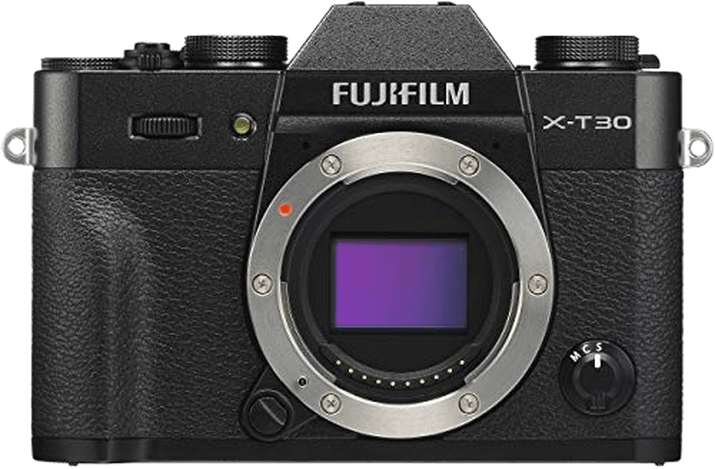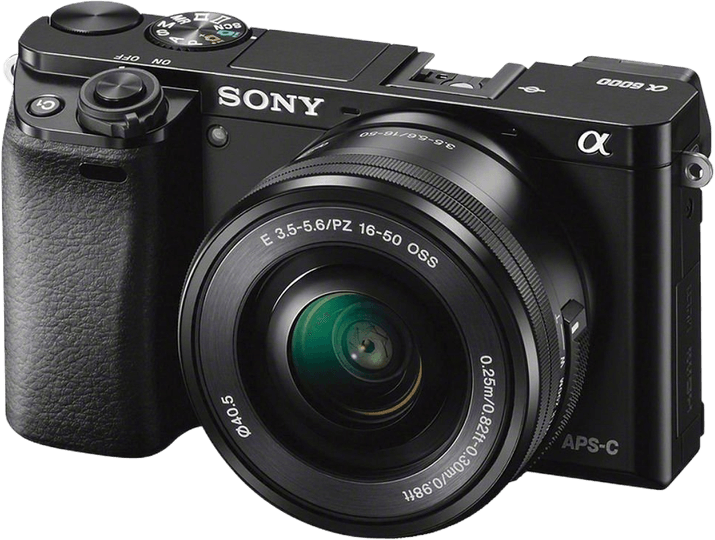Fujifilm X-T30 vs Sony a6000 Comparison
Fujifilm X-T30

Sony a6000

The Fujifilm X-T30 emerges as the winner with a score of 65/100, while the Sony a6000 trails behind at 57/100. Both cameras are mirrorless and share similarities in size, with the X-T30 measuring 118 x 83 x 47mm and weighing 383g, while the a6000 measures 120 x 67 x 45mm and weighs 344g.
The X-T30, released in 2019, boasts a higher launch price of $899, reflecting its superior features and performance. On the other hand, the Sony a6000, released in 2014, has a lower launch price of $799, making it a more budget-friendly option.
Despite the difference in scores, the Sony a6000’s lighter weight may appeal to some users. However, the Fujifilm X-T30’s higher score solidifies its position as the better camera in terms of overall performance and capabilities.
Fujifilm X-T30 vs Sony a6000 Overview and Optics
The Fujifilm X-T30 and the Sony a6000 both score 67/100 in our optics comparison, displaying similarities in their specifications. Both cameras have a CMOS sensor, APS-C sensor size, and no image stabilization. Additionally, they share the same lens mounts, with the Fujifilm X-T30 using a Fujifilm X mount and the Sony a6000 using a Sony E mount.
The Fujifilm X-T30 outperforms the Sony a6000 in terms of megapixels and shooting speed. It boasts 26 megapixels, providing more detail in photographs compared to the Sony a6000’s 24.3 megapixels. Furthermore, the X-T30 has a remarkable shooting speed of 30 frames per second (fps), significantly faster than the a6000’s 11 fps. This advantage allows the X-T30 to capture fast-moving subjects more efficiently.
On the other hand, the Sony a6000 possesses a notable advantage with its DXOMARK sensor score of 82. Unfortunately, DXOMARK does not score Fujifilm cameras, so a direct comparison is not possible. However, the a6000’s score indicates strong performance in terms of color depth, dynamic range, and low-light capabilities. Additionally, the a6000 utilizes the Bionz X processor, while the X-T30 features the X-Processor 4, but without a direct comparison, it is difficult to determine which processor is superior.
While both cameras have their strengths, the Fujifilm X-T30 excels in megapixels and shooting speed, making it suitable for capturing detailed images and fast-moving subjects. The Sony a6000, with its high DXOMARK sensor score, may perform better in various lighting conditions. Ultimately, the choice between these two cameras depends on the specific needs and preferences of the photographer.
Fujifilm X-T30 vs Sony a6000 Video Performance
The Fujifilm X-T30 outperforms the Sony a6000 in video capabilities, with a substantial difference in scores: 91/100 for the X-T30 and 56/100 for the a6000. Both cameras share some common specifications, but the X-T30 has clear advantages.
Both cameras feature the ability to record video, but the Fujifilm X-T30 has a higher maximum video resolution of 4K (4096 x 2160) compared to the Sony a6000’s Full HD (1920 x 1080) resolution. This difference allows the X-T30 to produce videos with greater detail and clarity.
Another advantage of the X-T30 is its higher maximum video frame rate of 120fps, double that of the a6000’s 60fps. This higher frame rate enables the X-T30 to capture smoother, more fluid video, particularly during fast action or slow-motion scenes.
Furthermore, the Fujifilm X-T30 has built-in time-lapse functionality, while the Sony a6000 does not. This feature allows the X-T30 to create stunning time-lapse videos without the need for additional software or equipment.
The Sony a6000 does not have any significant advantages over the Fujifilm X-T30 in terms of video capabilities. The lower score of 56/100 reflects its limited features compared to the X-T30.
With the superior video resolution, higher frame rate, and built-in time-lapse functionality, the Fujifilm X-T30 is the clear winner in this comparison. The Sony a6000, with its lower score and limited video features, falls short in providing the same level of video performance.
Fujifilm X-T30 vs Sony a6000 Features and Benefits
The Fujifilm X-T30 outperforms the Sony a6000 in features with a score of 70/100 compared to the Sony’s 41/100. Both cameras share some common specifications, such as a 3-inch screen size, flip screen, lack of GPS, and Wi-Fi connectivity. However, the Fujifilm X-T30 surpasses the Sony a6000 in several aspects.
The Fujifilm X-T30 has a higher screen resolution of 1,040,000 dots, providing a sharper and clearer display compared to the Sony a6000’s 921,600 dots. Moreover, the X-T30 features a touchscreen, which makes navigating menus and settings faster and more intuitive. This advantage is not present in the Sony a6000. Additionally, the X-T30 includes Bluetooth connectivity, allowing for seamless pairing with compatible devices, a feature the Sony a6000 lacks.
On the other hand, the Sony a6000 does not have any significant advantages over the Fujifilm X-T30 in terms of features. Both cameras have flip screens, Wi-Fi connectivity, and neither has GPS. The only advantage the Sony a6000 has is a slightly lower price point, which may appeal to budget-conscious buyers.
Taking all these factors into consideration, the Fujifilm X-T30 is a superior camera in terms of features, offering a higher screen resolution, touchscreen capabilities, and Bluetooth connectivity. The Sony a6000’s lower price may be attractive to some, but its lack of standout features makes it a less appealing option when compared to the X-T30.
Fujifilm X-T30 vs Sony a6000 Storage and Battery
The Fujifilm X-T30 outperforms the Sony a6000 in storage and battery with a score of 35/100 compared to the a6000’s 21/100. Both cameras have one memory card slot and accept SD, SDHC, and SDXC cards. The X-T30 has the edge with its UHS-I compatibility, allowing for faster read and write speeds.
The X-T30 also offers a slightly longer battery life, providing 380 shots per charge compared to the a6000’s 360 shots. Furthermore, the Fujifilm camera uses the NP-W126S battery and supports USB charging, an advantage for on-the-go photographers who need to charge their camera without access to a power outlet.
On the other hand, the Sony a6000 accepts Memory Stick Pro Duo and Pro-HG Duo cards in addition to the SD series, giving users more flexibility in their choice of storage media. However, it lacks USB charging and uses the NP-FW50 battery.
Considering these points, the Fujifilm X-T30 is the better choice for photographers seeking faster memory card performance and more convenient charging options. The Sony a6000 offers more storage media options but falls short in battery life and charging capabilities.
Fujifilm X-T30 vs Sony a6000 – Our Verdict
Are you still undecided about which camera is right for you? Have a look at these popular comparisons that feature the Fujifilm X-T30 or the Sony a6000:

